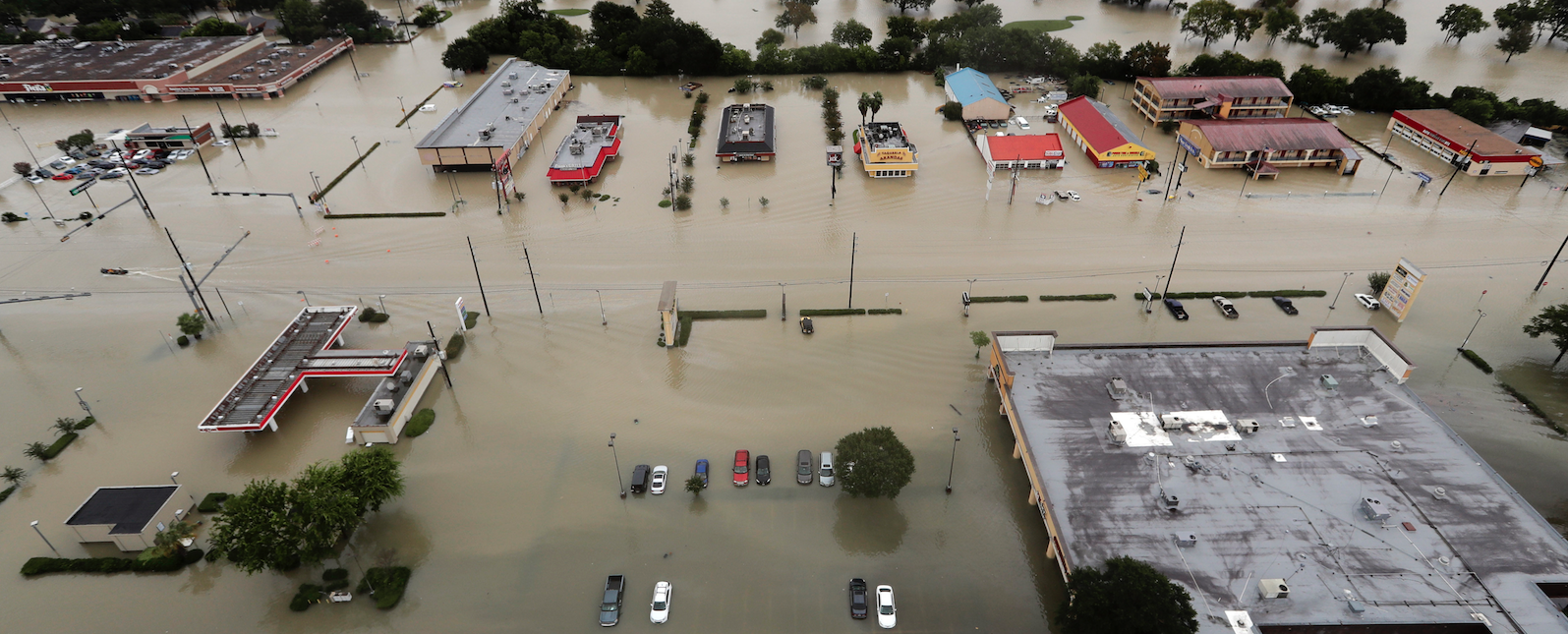Horrors of Harvey bring lessons, omens for future

Katrina. Sandy. Wilma. Andrew. Hugo. Ike. Camille. Agnes.
Today, after five days of high winds and cataclysmic levels of flooding, the name Harvey has joined that loathsome league of the most destructive natural disasters in American history. In terms of property damage alone, early estimates of more than $30 billion in losses in Houston and East Texas rank Harvey third behind only Katrina in 2005 and Superstorm Sandy in 2012.
As of Tuesday, the numbers tied to Harvey shock the senses. Eleven trillion gallons of rain have soaked Texas, 13 million people have been under flood warnings, 30,000 have sought emergency shelter, 12,000 national guard members have been dispatched, and 62 counties have been placed under a Texas disaster declaration.
And Harvey’s wrath shows few signs of subsiding quickly. Over the next several days, the Houston area is expected to be pummeled with more torrential rainfall, bringing the one-week total of 50 inches or more equivalent to the amount of rainfall the fourth-largest metropolitan area in the nation typically receives in an entire year’s time. It already ranks as the largest rainfall from one system in recorded U.S. history.
Not surprisingly, the Federal Emergency Management Agency estimates it will take years, if not decades, for parts of the storm-ravaged region to fully recover.
Today and in the immediate days ahead, search and rescue operations must take priority above all else to help minimize the growing toll of dead and injured. But even amid the opening stages of the recovery mission, Harvey has evoked some lessons and omens for the long haul.
For one, Harvey has reinforced the potential fallout from this nation’s aging and neglected infrastructure.
Houston, whose metropolitan area is home to more than 6.5 million people, is situated on flood-prone low-lying land. The city is criss-crossed by a complex network of bayous that are easily overwhelmed by heavy rain, made worse by sudden inflows of water from impervious surfaces like concrete.
Making matters worse, the metro area’s explosive growth in recent years and decades has paid inadequate attention to effective drainage systems.
The concrete destruction of wetlands not only bodes ill for Texas, but for all regions in which natural drainage systems are ripped asunder to construct the newest big-box store or trendy strip mall.
In fact, the American Society of Civil Engineers gave this nation’s 30,000-plus miles of flood-control levees the poor grade of D in its 2017 Report Card on America’s Infrastructure. As development continues to encroach in floodplains, ACES estimates $80 billion will be needed in the next 10 years to maintain and improve the nation’s system of levees to prevent flooding calamities.
CLIMATE CHANGE AND FLOODING
Another strategic perspective that Harvey underscores is the impact of climate change on the potential for flooding. Climatologists agree that as the Earth gets warmer, which it has done every year in recent memory, the potential for extreme rainfall also increases. That’s because the warmer the air, the more moisture it holds and can unleash.
Experts say that has been a phenomenon partially behind the historically massive torrents paralyzing Greater Houston. As such, Harvey offers additional evidence to counter stubbornly held positions of climate-change deniers.
On a more optimistic note, the response thus far to Harvey by state and federal officials indicates lessons have been learned since the most infamous example of natural fury from Hurricane Katrina 12 years ago this very week in Louisiana. By all accounts, the Federal Emergency Management Agency’s response this time around has been expeditious and thorough.
Texas Gov. Greg Abbot was quick to offer commendations: “I’ve got to tell you, I give FEMA a grade of A+, all the way from the president down,” Abbott said. President Donald J. Trump himself visited the flood-ravaged state Tuesday, offering additional reassurances the federal government would continue its assistance “better than ever before.”
For all of its devastation, Harvey also has been instructive in illustrating the scope and depth of American compassion and willingness to help those facing life-altering crises. American Red Cross units, including a contingent from Northeast Ohio, is leading thousands to shelters and serving tens of thousands of meals.
As we ponder the long-term implications of Harvey, those of us with the means would do well to lend monetary support to the Red Cross, Salvation Army and other rescue agencies to improve the quality of short-term relief efforts. After all, who among us knows just where nature’s fury will decide to strike next?
 43
43
